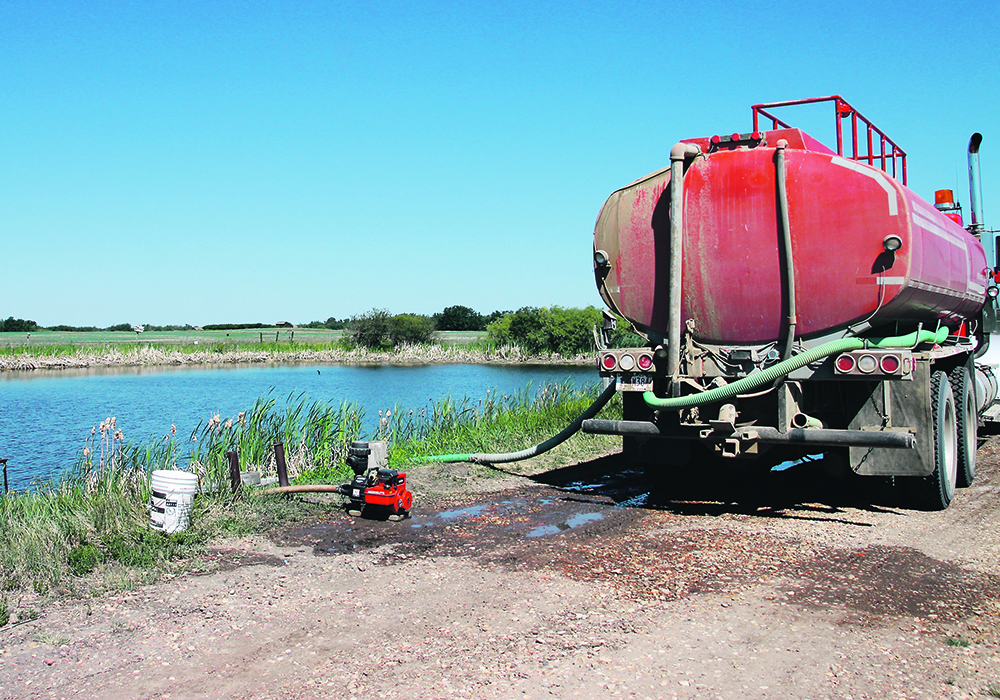Producers must ensure a new dugout stays free of algae, can last through a multi-year drought and stand the test of time
Farmers planning to construct a new dugout are likely aware of what constitutes good practice, but it’s still good to review proper methods before starting, according to a webinar hosted by the Battle River Research Group.
Shawn Elgert, water engineer with Alberta Agriculture, reminded producers of the need to ensure their dugout stays free of algae, can last through a multi-year drought and will stand the test of time.
“A lot of people think a dugout is just a hole in the ground but, in fact, it can be more challenging than a well in regards to variable water quality,” said Elgert. “It’s influenced by more outside sources — animals, humans and the environment as well as contractors can vary in quality.”
Read Also

Canadian Food Inspection Agency red tape changes a first step: agriculture
Farm groups say they’re happy to see action on Canada’s federal regulatory red tape, but there’s still a lot of streamlining left to be done
Employing a contractor with a solid track record and good reputation is the best place to start, he said.
Understanding the regulations governing construction is also important, including having a grasp on the need to have approval to construct a dugout if it’s more than 2,500 cu. metres as well as a licence to use the water if the dugout is more than 12,500 cu. metres or if half the water is used in a single year.
Siting a dugout is also important to ensure it’s in a low-lying area and not directly next to a water body.
“It should fill eight out of every 10 years in order to be feasible because when you need water the most, it’s in a time of drought,” said Elgert.
An open area is the best location, away from trees and shrubs that might fall in the water, leading to poorer water quality and increased sentiment.
Dugouts should be set back from deciduous trees by 50 metres and 20 metres from coniferous trees.
Digging a dugout into the water table can create problems, primarily with leakage.
Having the dugout nearest to where it will be used, close to another dugout and ensuring there is power are best practises to ensure ease of maintenance, said Elgert.
Regarding droughts, dugouts should be able to provide a two-year supply of water, which will require accessing publicly available livestock use charts, knowing how much to keep in reserve for fire protection, as well as any other uses such as gardens.
When it comes to water quality, Elgert said an ounce of prevention is worth a pound of cure.
But if a Band-Aid treatment is required, one tip must be considered.
“Identify the problem,” said Elgert. “Without doing that, you might be doing more harm than good with treatment and I’ve seen it so many times that people have used the wrong product or grossly over-applied.”
There are many options for water quality testing that can test for a range of issues, he said.
When dealing with blue-green algae, the most common water quality issue, a simple test can detect it.
“If you try to grab it, if it is only slime in your hands, it’s maybe, most likely blue-green algae,” said Elgert, warning gloves should be used to avoid a rash.
A full list of tips and requirements for dugouts in Alberta can be found on the provincial website under farm water resources.
Funding is available for design and planning of dugouts through the Canadian Agricultural Partnership water program.
















